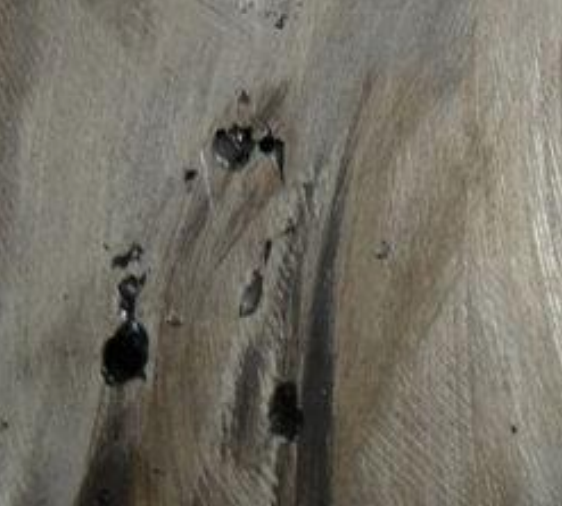Review of Die Cast Plunger Lubrication System Patent
- Hill and Griffith

- Feb 22, 2017
- 4 min read
(This week's post is a review of a die casting plunger lubricant patent US 5076343 A in order to learn more about the application and technology.)
Die cast plunger lubrication system patent
ABSTRACT
A lubrication system for the plunger of a die cast machine is disclosed that does not require a timing mechanism or an additional pressure source for the lubricant. The forward stroke of a lube piston is used to force lubricant out of a lubrication chamber in the plunger through a passageway to the outer surface of the plunger by decreasing the volume of the lubrication chamber. A spring within the plunger's lubrication chamber is used to retract the piston and thereby increase the volume of the lubrication chamber. The relatively low pressure during this retraction stroke allows lubricant to flow from a lubricant tank into the lubrication chamber for distribution during the next forward stroke of the plunger.

DESCRIPTION - BACKGROUND OF THE INVENTION
This invention relates to die casting equipment, and more particularly to a lubrication system for die casting equipment.
In die casting, molten metal is poured into a shot sleeve via a pour funnel. A plunger consisting of a plunger rod and a plunger tip is axially moved or extended into the shot sleeve to push the molten metal or "shot" into the die cast. It is necessary to both lubricate and cool the plunger due to the high temperatures, the presence of molten metal on the plunger tip and the plunger rod, and the friction between the plunger components and the shot sleeve.
In typical prior art plunger lubrication systems, a lubricant is sprayed from a pressurized lubrication source onto the plunger tip or into the shot sleeve via the pour funnel. This system has the disadvantages of being very messy since the sprayed lubricant has a tendency to scatter, and also is very inefficient and ineffective since the lubricant on the plunger rod and plunger tip may be unevenly distributed. Also, when the lubricant is sprayed into the shot sleeve and metal is poured into the sleeve, the lubricant has a tendency to burn, creating undesirable gases.
Other prior lubrication systems use complicated hydraulics or electronic timing mechanisms by which a lubricant is provided to the plunger components in timed relation to the position of the plunger. Such systems also typically require an additional source of high pressure to enable the lubricant to be transported to the outer surface of the plunger. In short, such systems are complicated and expensive since they require additional component parts.
SUMMARY OF THE INVENTION
A lubrication system is disclosed for the plunger tip of a die cast machine. The lubrication system comprises a lubrication chamber formed within either the plunger rod or the plunger tip, and a first transport means for transporting lubricant from a pressurized lubricant tank to the lubrication chamber. The lubricant in the chamber is transported by a second transport means to the outer surface of the plunger in response to the increase of pressure within the lubrication chamber. In a preferred embodiment, the pressure applied to the lubricant in the lubrication chamber is increased by reducing the volume of the chamber using a lube piston that is axially movable within the plunger by a plunger movement means. Another pressure source such as a pressure line could be used to increase the pressure within the lubrication chamber.
The lube piston preferably has a step protrusion that engages the plunger movement means Movement of the lube piston applies pressure to the lubricant and forces it out of the lubrication chamber through a second transport means to the outer surface of the plunger. The lubrication system may be retrofit onto existing die cast plungers by modifying the plunger to create the lubrication chamber and the first and second transport means. In the alternative, the plunger may be specially designed for use with the lubrication system according to the present invention.
Other features of the preferred embodiment include a cooling means for cooling the plunger by passing water or another coolant through a cooling passageway within the plunger tip. A volume increasing means such as a spring may also be used to increase the volume of the lubrication chamber after its volume has been decreased by the movement of the lube piston. The spring also resists some of the initial inertia of the moving lube piston, slightly delaying the output of the lubricant until the plunger tip has passed the pour hole for the molten metal. Thus, lubricant does not flow out of the pour hole, as in typical prior art spray lubrication systems.
In a preferred embodiment, the second pressure means used for increasing the pressure within the lubricant source is the standard industrial shop compressed air line, so that no additional pressure source such as a pump is required as in prior art devices.
Lubricant is drawn into the lubrication chamber while the lube piston is being retracted, and is forced out of the lubrication chamber by the lube piston while the plunger is being axially extended into the shot sleeve without the need for hydraulic or electronic timing devices as required in prior art lubrication systems.
It is a feature and advantage of the present invention to provide a die cast lubrication system that is inexpensive and has fewer components than prior art systems.
It is another feature and advantage of the present invention to use the force transmitted by a standard die cast plunger movement means to transport lubricant to the outer surface of the plunger.
It is yet another feature and advantage of the present invention to provide a die cast lubrication system which more evenly distributes the lubricant on the outer surfaces of the plunger components and on the internal surface of the shot sleeve.









Comments